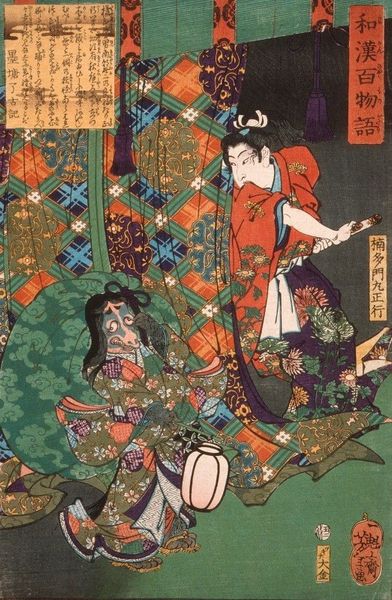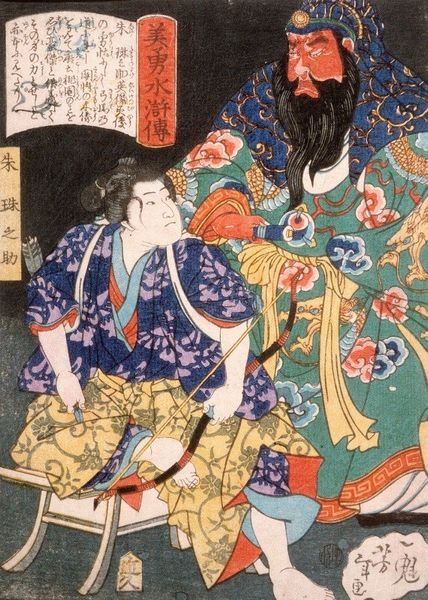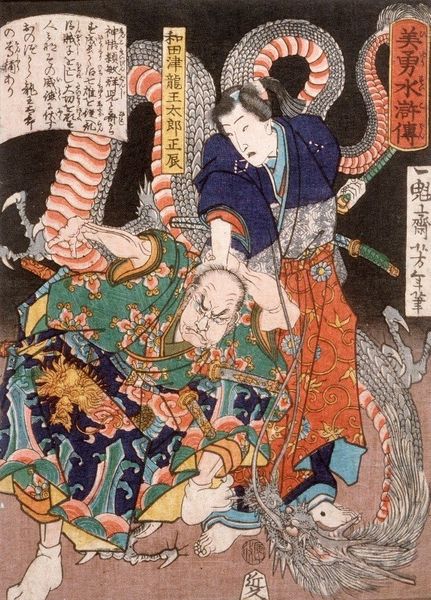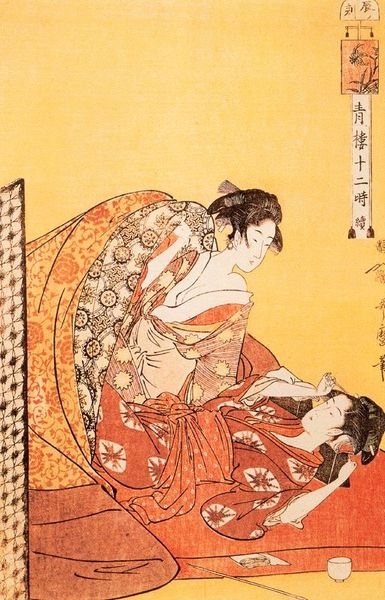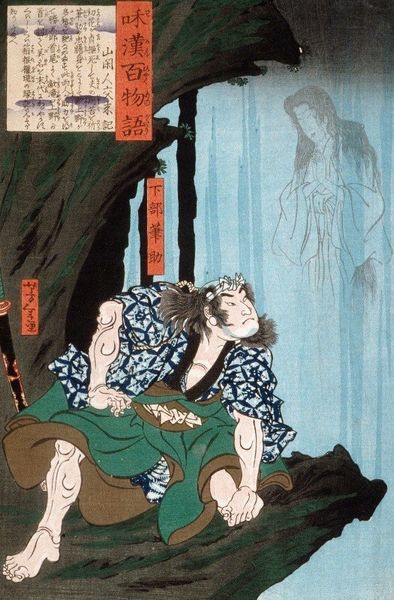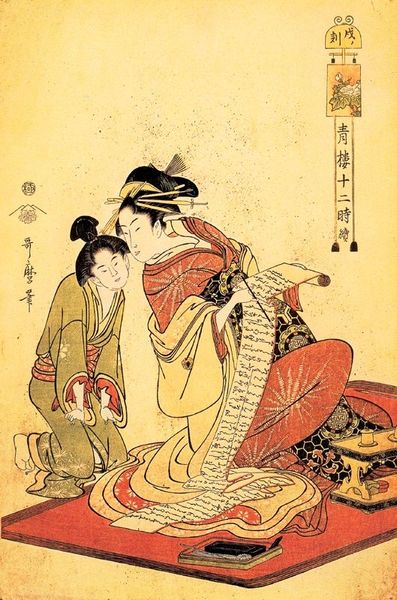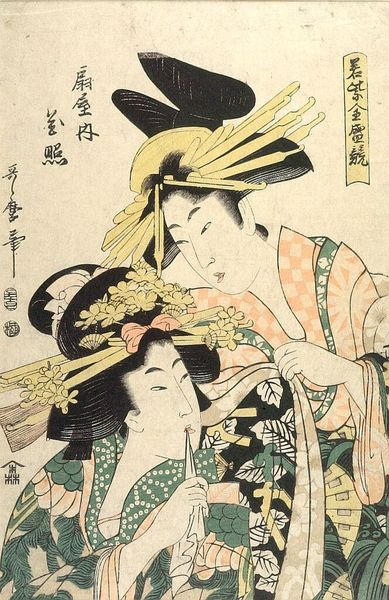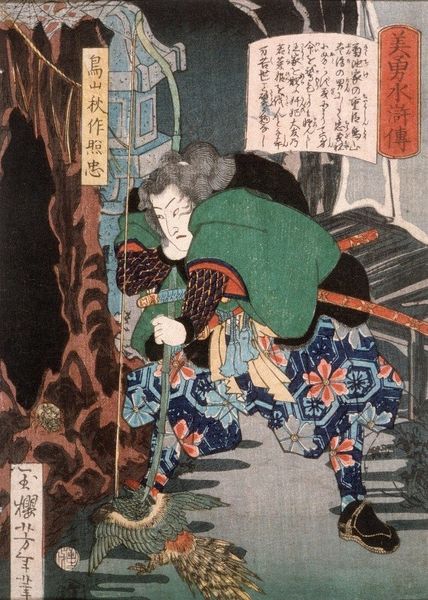
print, woodblock-print
#
narrative-art
# print
#
asian-art
#
ukiyo-e
#
figuration
#
woodblock-print
Copyright: Public Domain: Artvee
Curator: Just look at the sheer tension emanating from this ukiyo-e print! It's breathtaking how the artist conveys such a visceral moment. Editor: I agree. This scene absolutely crackles with an energy—it feels almost violent. I can hardly believe it's crafted through a relatively controlled medium such as a woodblock print. Curator: The piece you're observing, titled "Ōhara Takejirō Takematsu Subduing a Bald Demon", was created in 1867 by Tsukioka Yoshitoshi. Consider the cultural context—Yoshitoshi was deeply influenced by both traditional Japanese art and the influx of Western artistic styles at the time. This piece shows his master craftsmanship and adaptation. Editor: Yes, indeed, look closely and you see such artful layering of pattern upon pattern—the demon’s almost frantic grasping contrasting beautifully against Takematsu’s controlled pose. Note also the color contrasts--deep black is set off against stark white, and so forth. Curator: Precisely! And to place this within a broader narrative, we must understand the social fabric in which stories of heroic figures and demonic encounters captivated the popular imagination. These were times of intense societal upheaval. Ukiyo-e prints, like this, served as powerful cultural signifiers reflecting the shifting values. They often embodied complex ideas about morality, power, and order, and particularly order overcoming the disordered. Editor: The work feels immediate and raw, yet meticulously constructed. Every element—the lines defining the muscularity of Takematsu, the frantic, desperate gesture of the demon, the carefully placed blocks of red, black, and green—serves a purpose. We see perfect balances and contrasts throughout. It achieves an effect greater than its size would lead you to imagine. Curator: Reflecting on its lasting power, this print is a great testament to art's capacity to mirror anxieties of transition but at the same time offer compelling symbols of cultural identity. Editor: Ultimately, in considering this work, its powerful dynamics urge one to a more critical engagement with historical traditions—particularly its technical ingenuity in evoking drama and raw power, and doing so with the apparent simplicity of graphic art.
Comments
No comments
Be the first to comment and join the conversation on the ultimate creative platform.

